Abstract
1. A truncated spinning windmill pattern, illuminating only the receptive field surround, shown previously to activate amacrine cells, was used to elicit activity at the inner plexiform layer and to reduce the response of ganglion cells to test flashes at the receptive field centre. 2. The spinning windmill pattern reduced the ganglion cell response over its entire graded range by a fixed amount, and reduced the domain of test intensities required for graded activity. 3. The windmill effect was graded for windmill intensities over a domain of about 1000 to 1. The effect was constant for windmill velocities from about 0.05 to 0.5 rev/sec, and diminished beyond these velocities. 4. The windmill effect varied with windmill area as though each retinal point contributed to the reduction of ganglion cell response with a weighting which fell exponentially from the receptive field centre. The space constant was 0.35 mm. 5. The graded reduction in ganglion cell response was closely correlated with the graded increase in amacrine cell activity when the windmill intensity, area, and velocity were varied. It is inferred that amacrine cells, activated by the windmill, act to reduce the response range of the ganglion cells, primarily through a feed-forward pathway.
Full text
PDF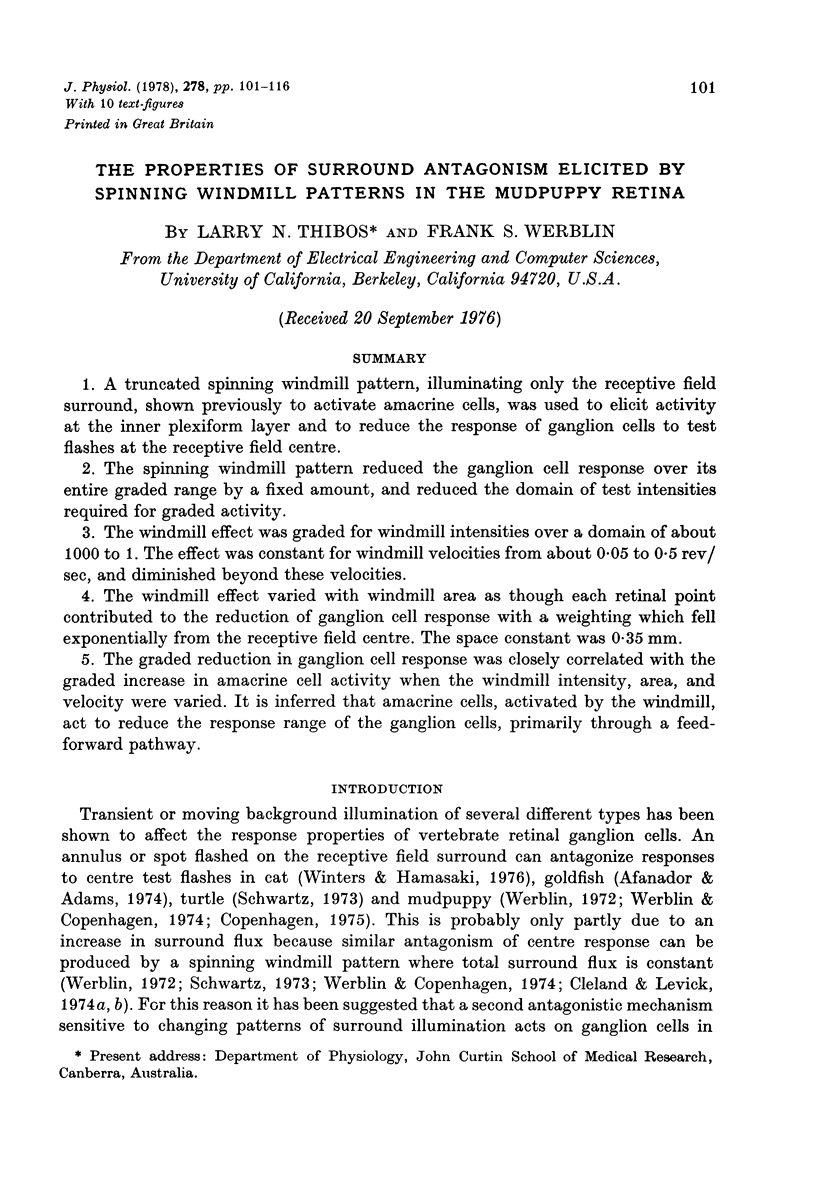
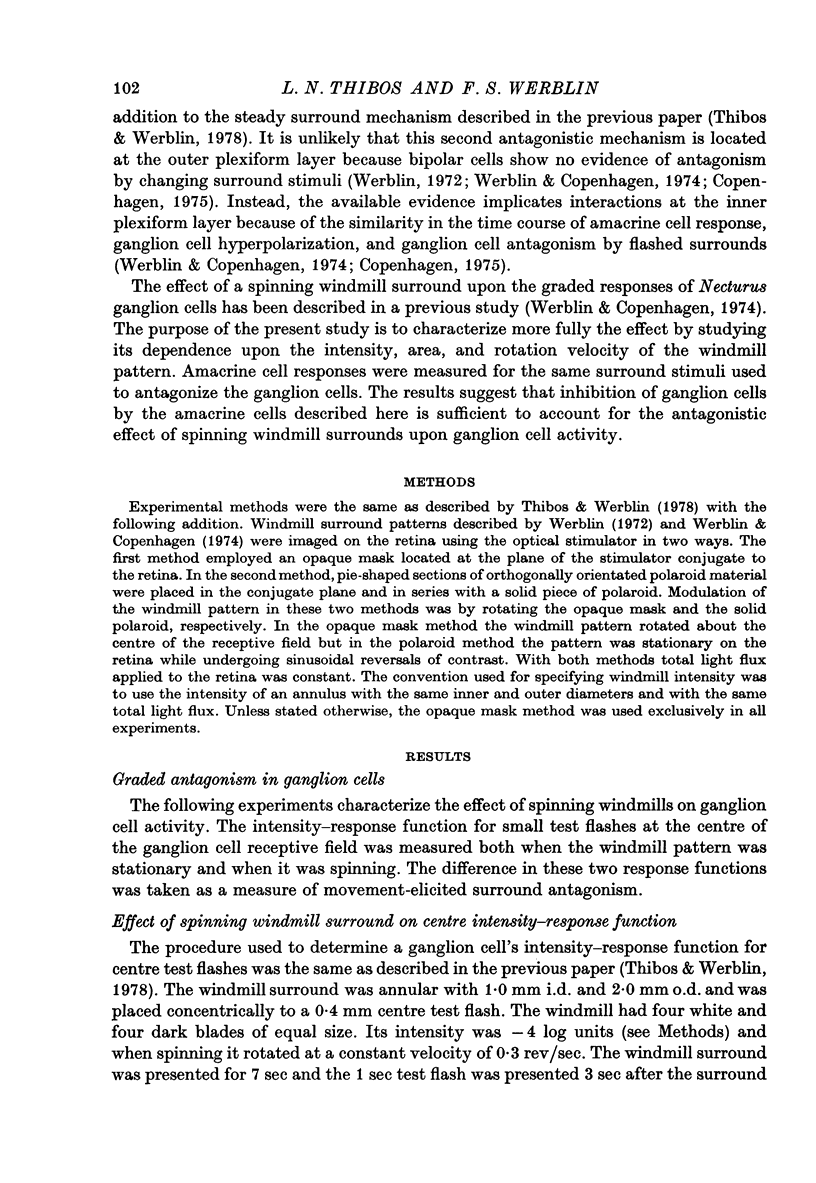
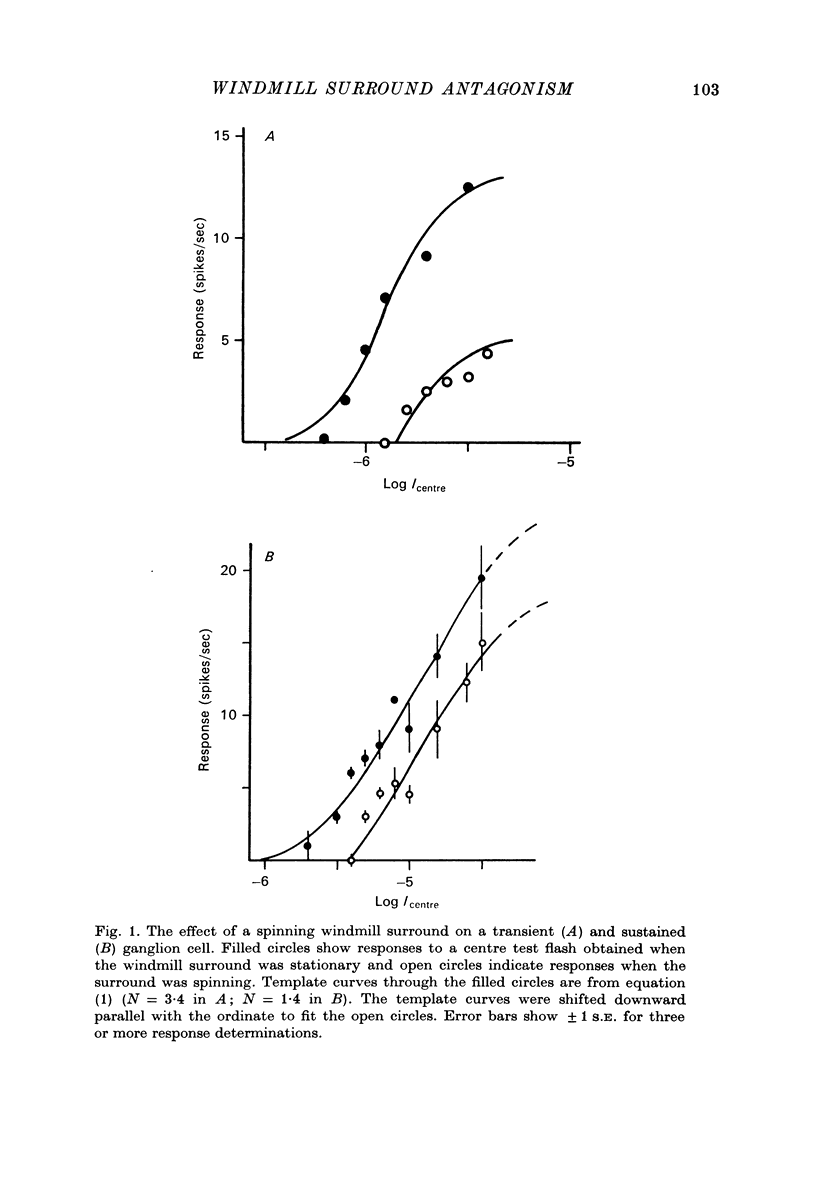
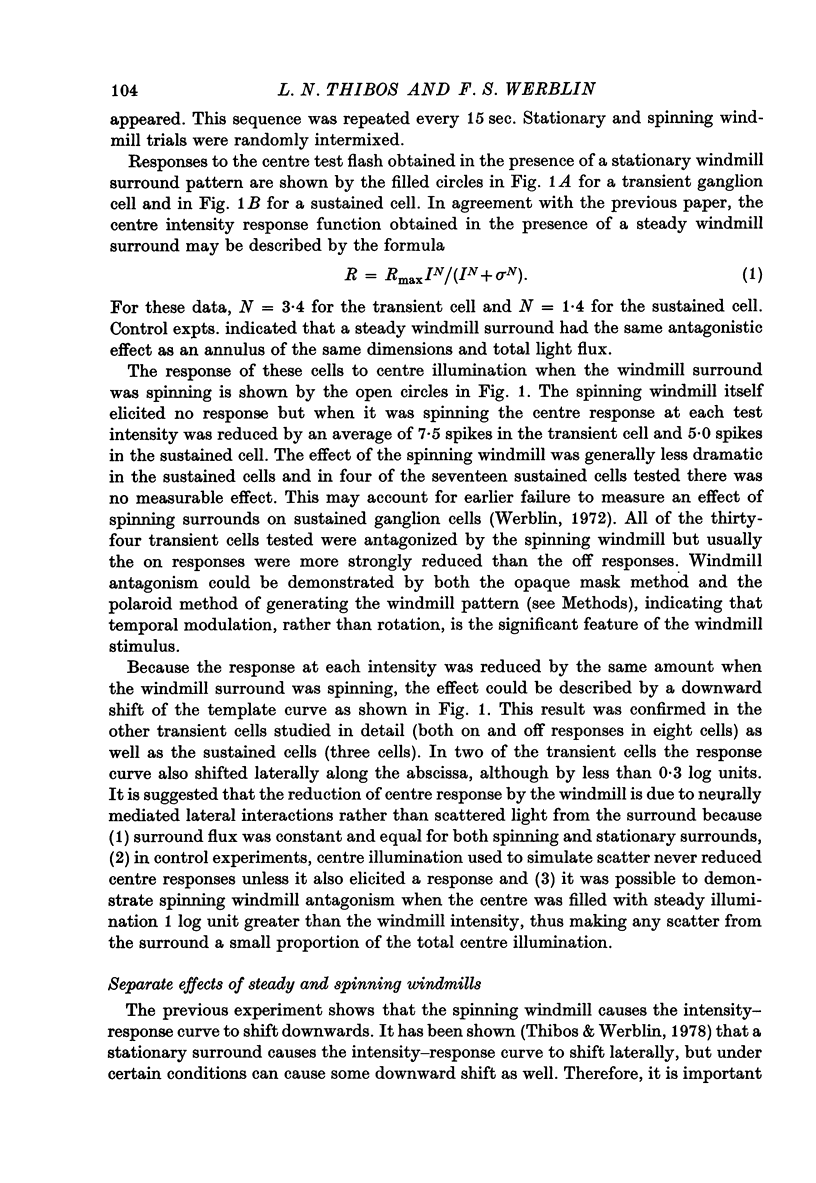
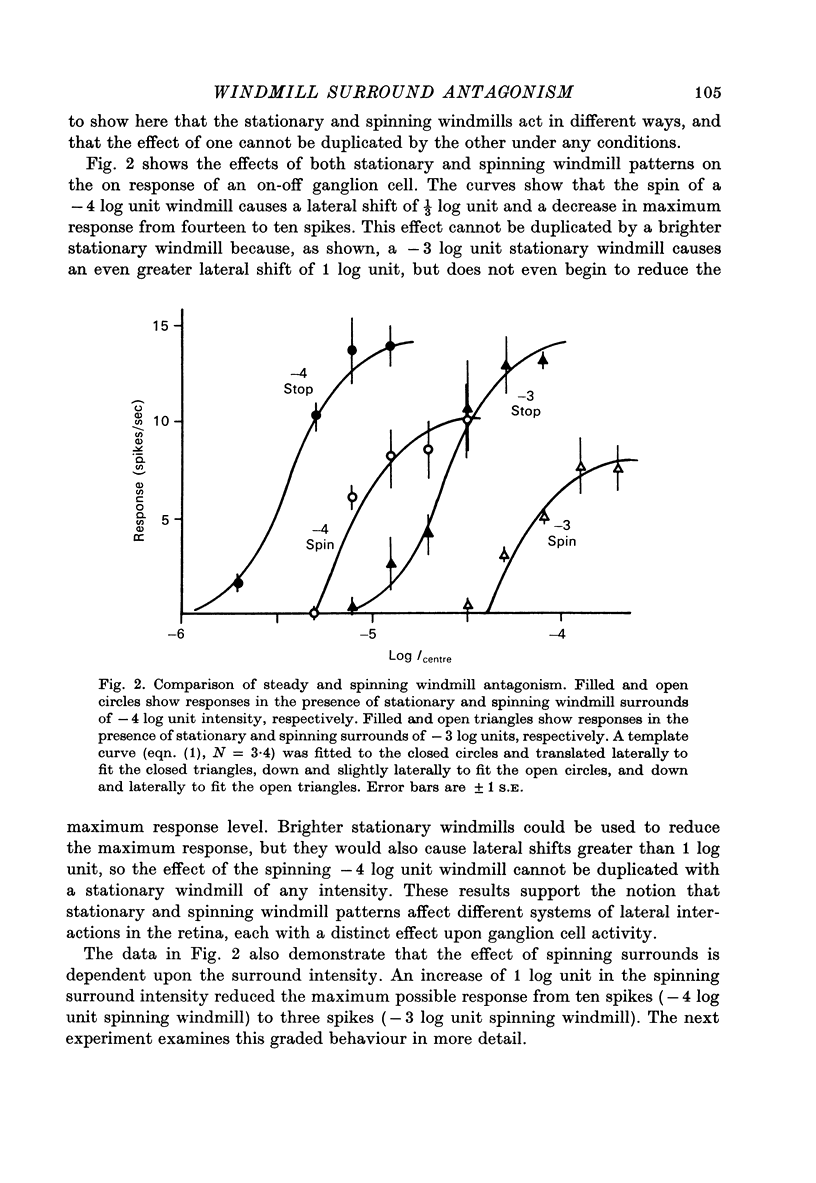

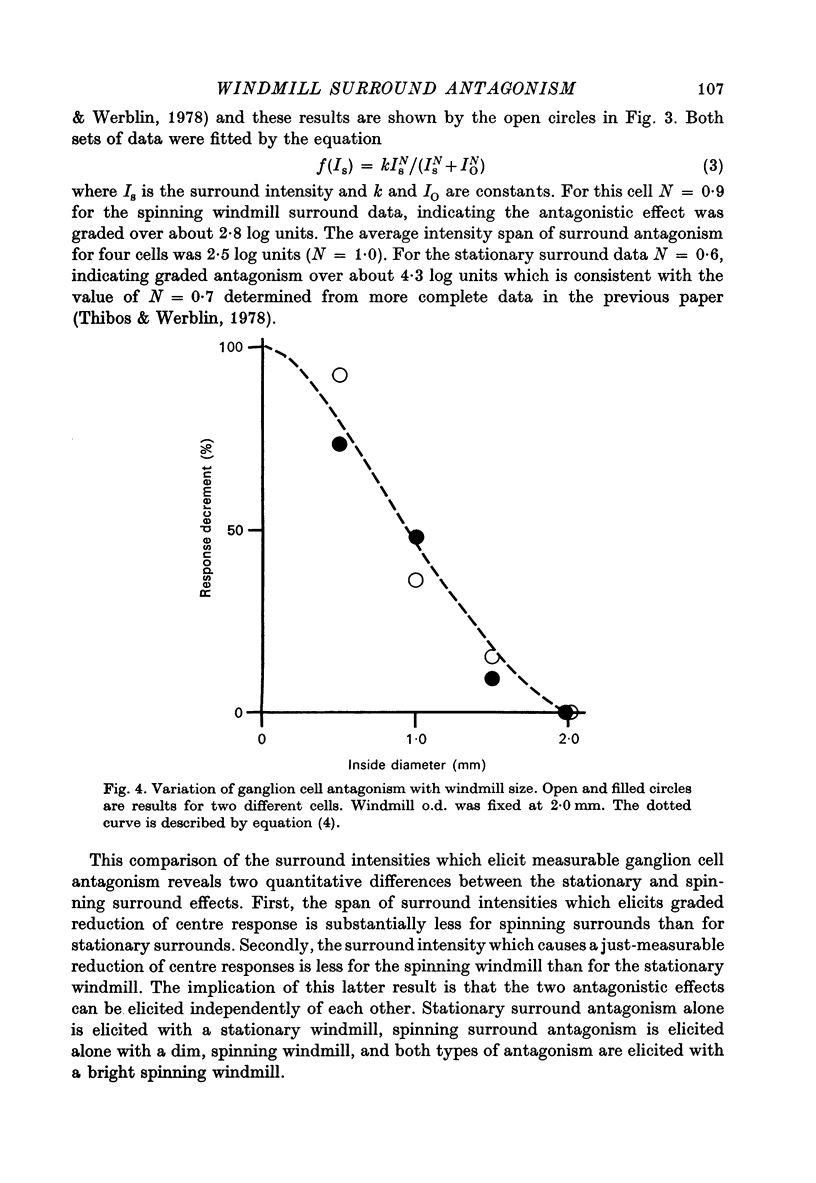
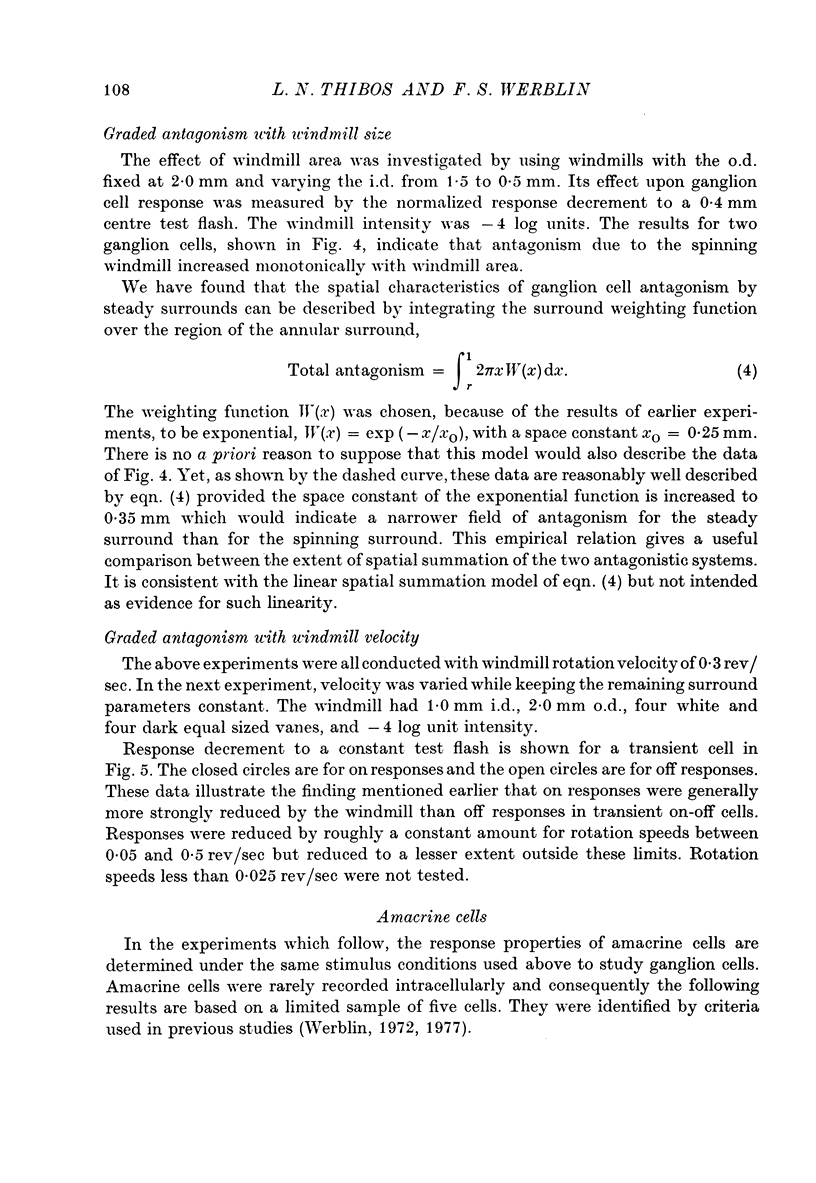
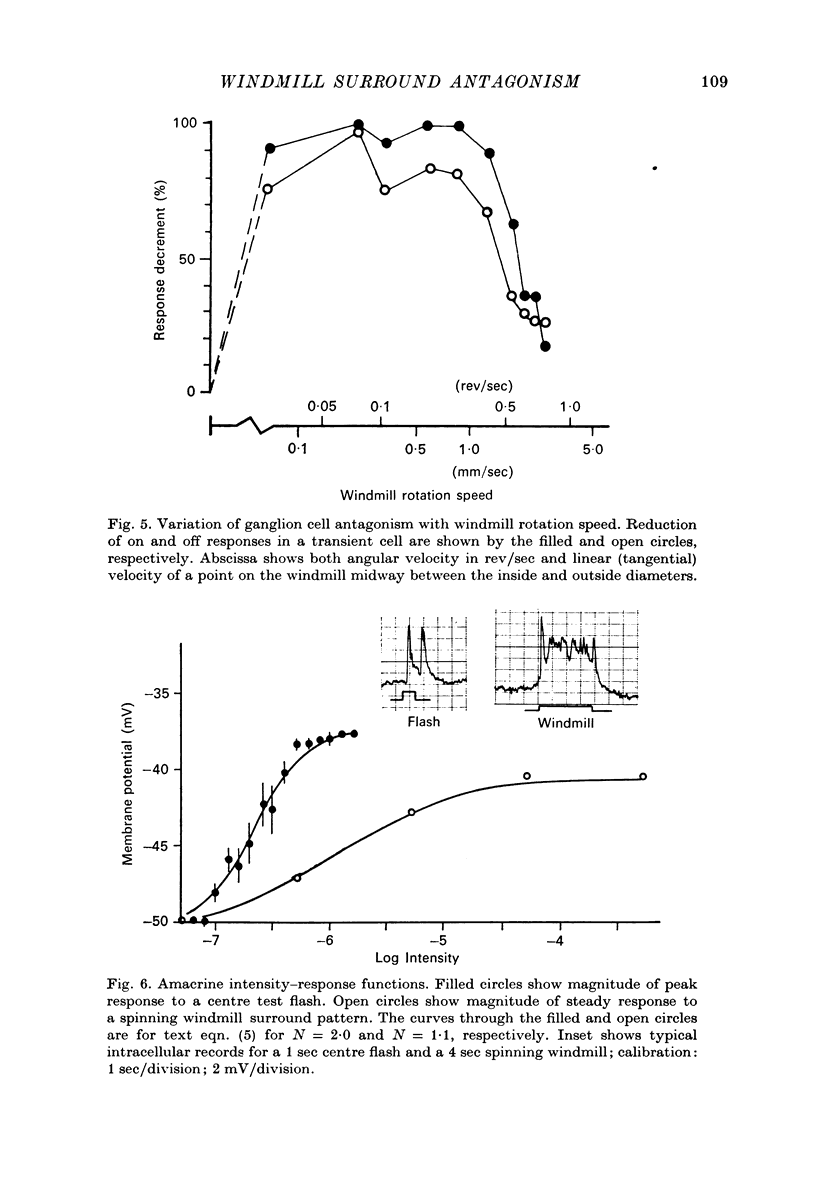
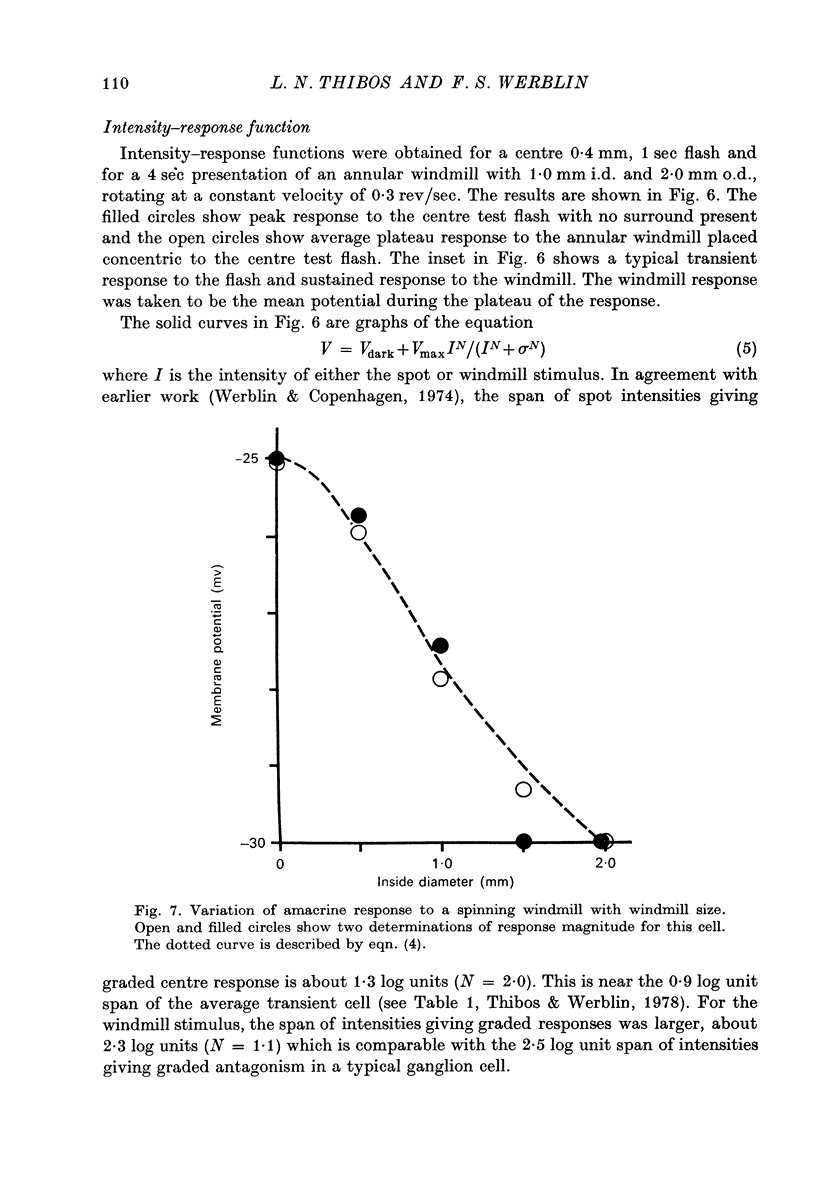

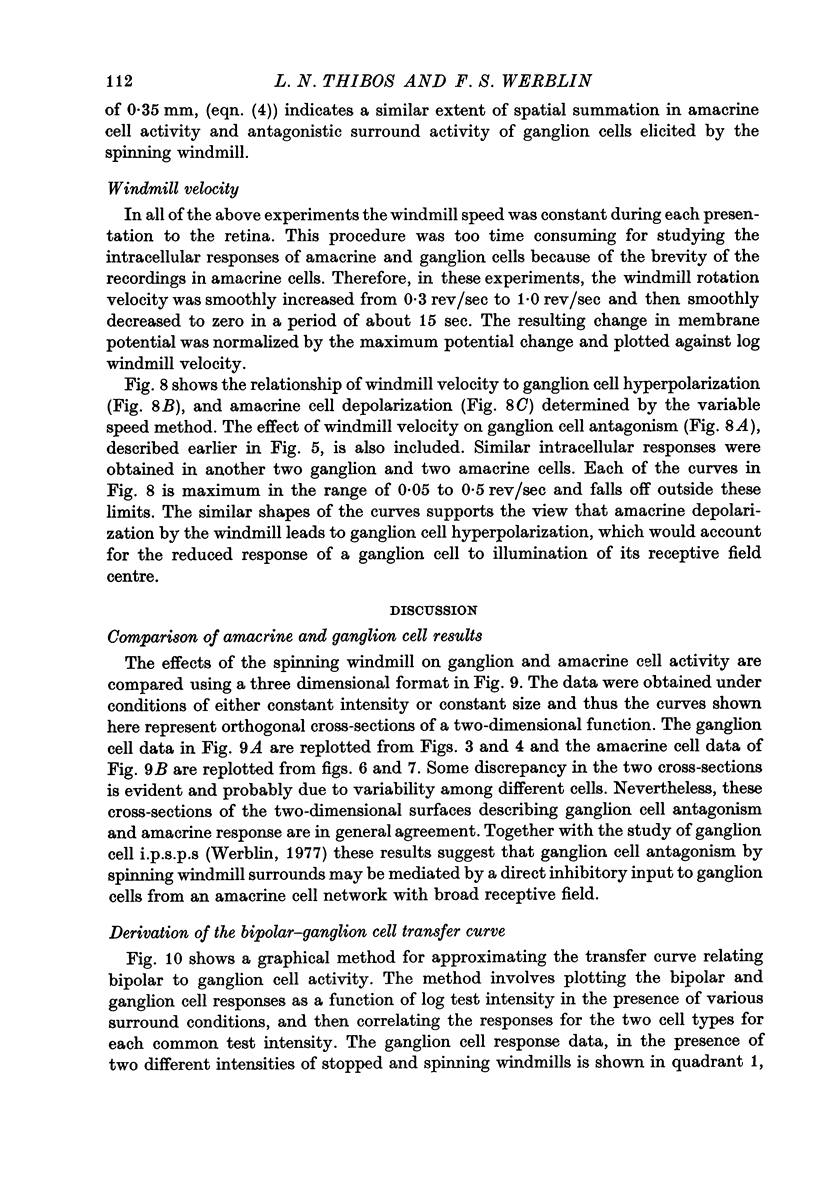
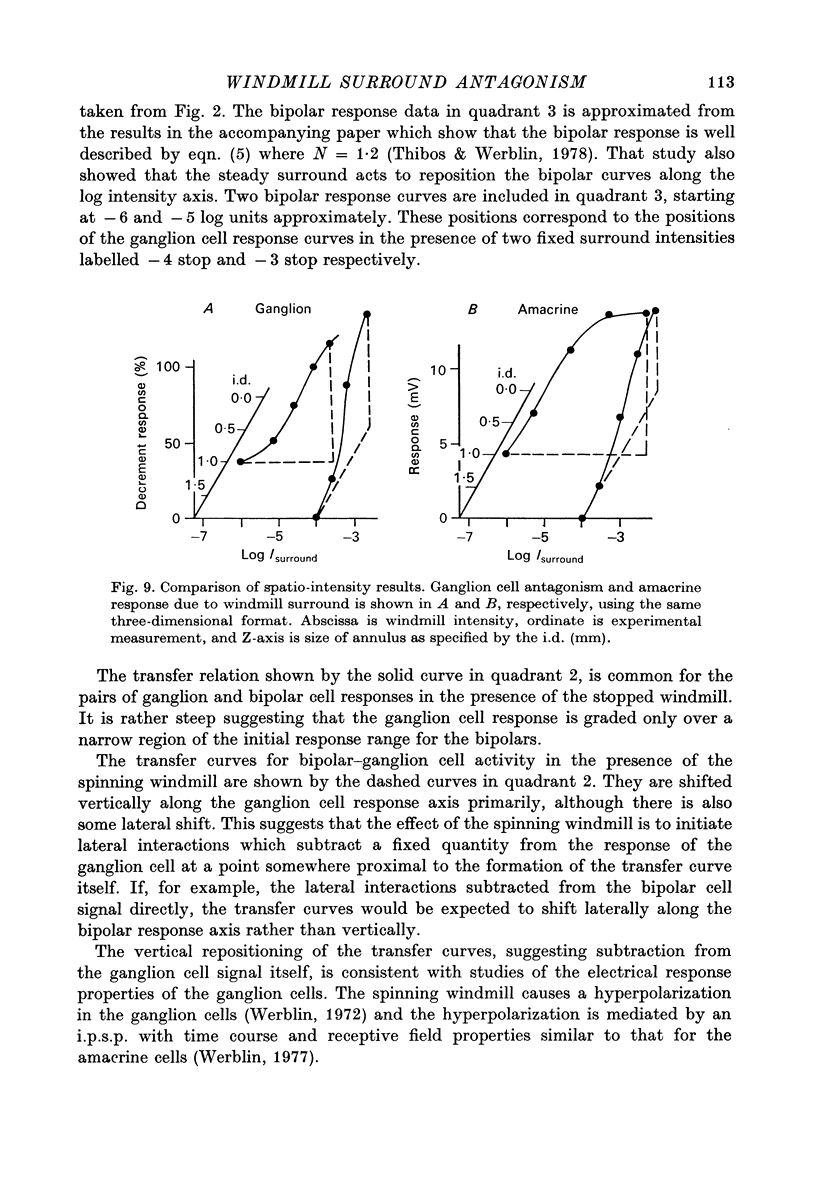
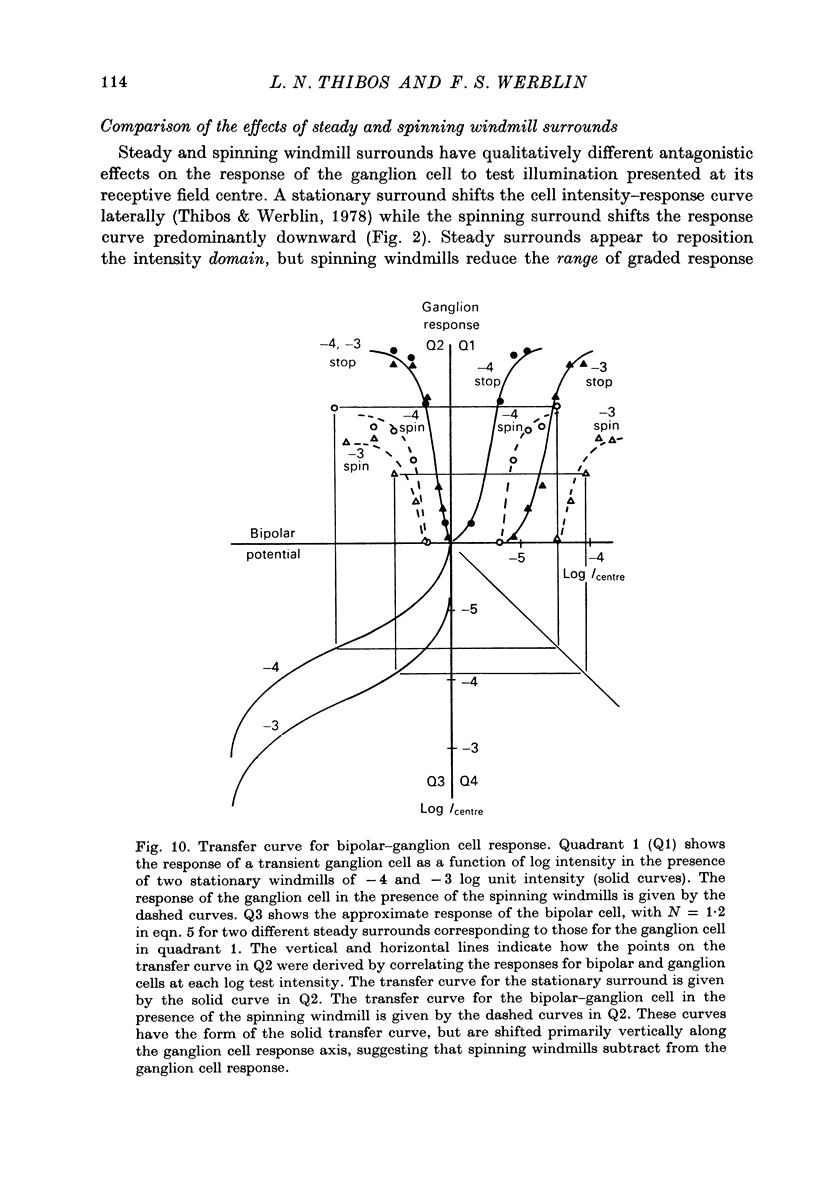
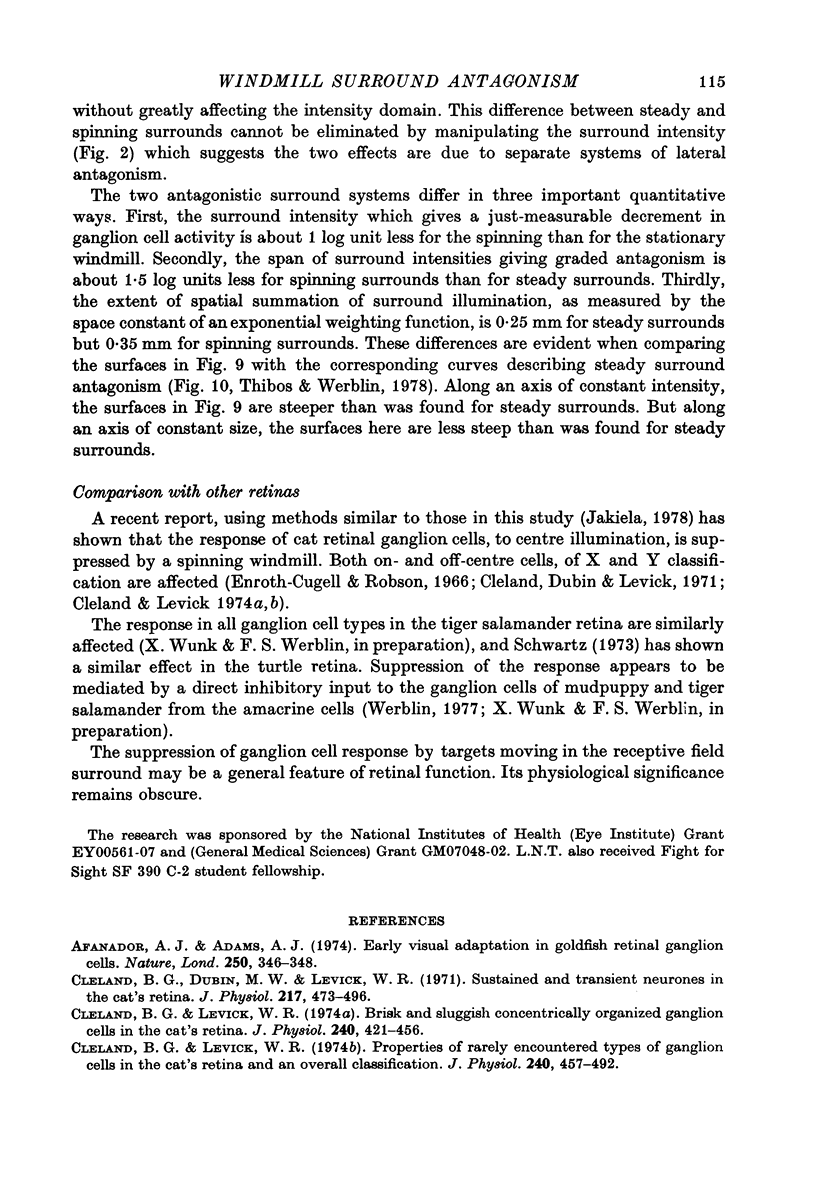
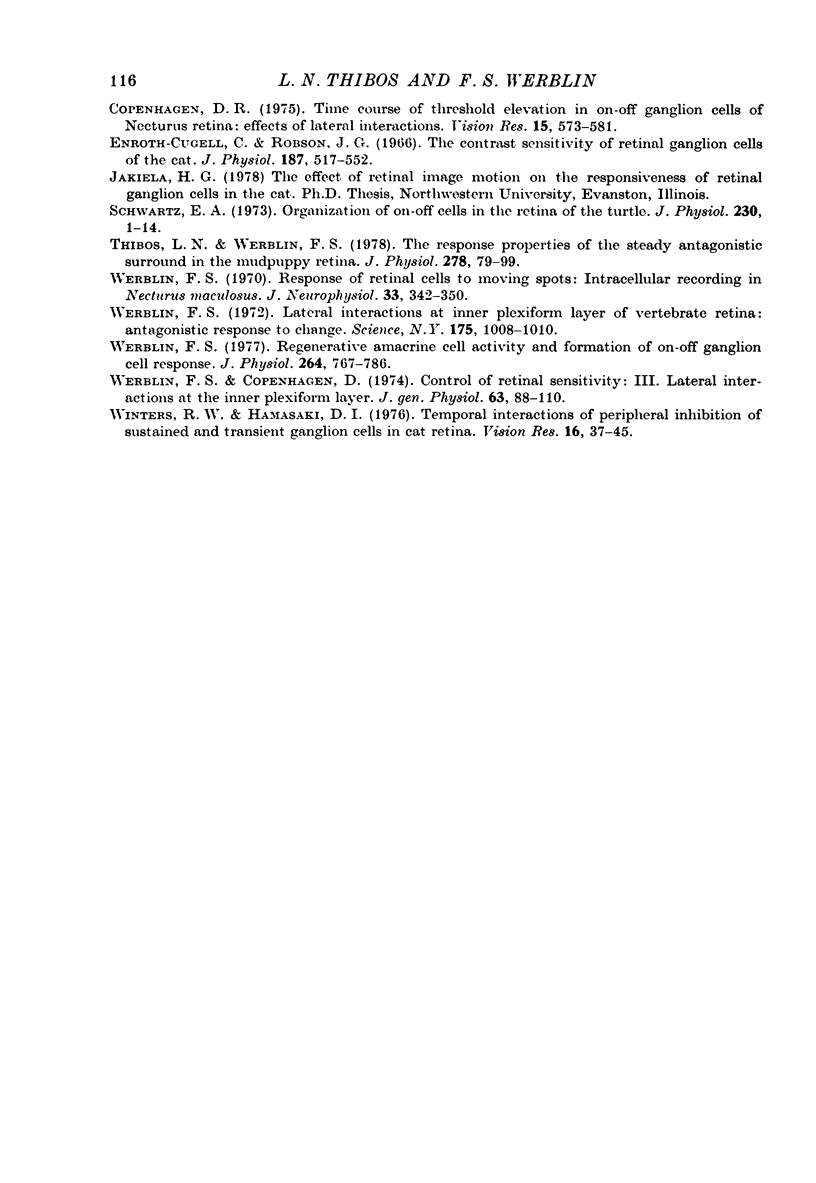
Selected References
These references are in PubMed. This may not be the complete list of references from this article.
- Afanador A. J., Adams A. J. Early visual adaptation in goldfish retinal ganglion cells. Nature. 1974 Jul 26;250(464):346–348. doi: 10.1038/250346a0. [DOI] [PubMed] [Google Scholar]
- Cleland B. G., Dubin M. W., Levick W. R. Sustained and transient neurones in the cat's retina and lateral geniculate nucleus. J Physiol. 1971 Sep;217(2):473–496. doi: 10.1113/jphysiol.1971.sp009581. [DOI] [PMC free article] [PubMed] [Google Scholar]
- Cleland B. G., Levick W. R. Brisk and sluggish concentrically organized ganglion cells in the cat's retina. J Physiol. 1974 Jul;240(2):421–456. doi: 10.1113/jphysiol.1974.sp010617. [DOI] [PMC free article] [PubMed] [Google Scholar]
- Cleland B. G., Levick W. R. Properties of rarely encountered types of ganglion cells in the cat's retina and an overall classification. J Physiol. 1974 Jul;240(2):457–492. doi: 10.1113/jphysiol.1974.sp010618. [DOI] [PMC free article] [PubMed] [Google Scholar]
- Copenhagen D. R. Time course of threshold elevation in on-off ganglion cells of Necturus retina: effects of lateral interactions. Vision Res. 1975 May;15(5):573–581. doi: 10.1016/0042-6989(75)90305-3. [DOI] [PubMed] [Google Scholar]
- Enroth-Cugell C., Robson J. G. The contrast sensitivity of retinal ganglion cells of the cat. J Physiol. 1966 Dec;187(3):517–552. doi: 10.1113/jphysiol.1966.sp008107. [DOI] [PMC free article] [PubMed] [Google Scholar]
- Schwartz E. A. Organization of on-off cells in the retina of the turtle. J Physiol. 1973 Apr;230(1):1–14. doi: 10.1113/jphysiol.1973.sp010171. [DOI] [PMC free article] [PubMed] [Google Scholar]
- Thibos L. N., Werblin F. S. The response properties of the steady antagonistic surround in the mudpuppy retina. J Physiol. 1978 May;278:79–99. doi: 10.1113/jphysiol.1978.sp012294. [DOI] [PMC free article] [PubMed] [Google Scholar]
- Werblin F. S. Lateral interactions at inner plexiform layer of vertebrate retina: antagonistic responses to change. Science. 1972 Mar 3;175(4025):1008–1010. doi: 10.1126/science.175.4025.1008. [DOI] [PubMed] [Google Scholar]
- Werblin F. S. Regenerative amacrine cell depolarization and formation of on-off ganglion cell response. J Physiol. 1977 Jan;264(3):767–785. doi: 10.1113/jphysiol.1977.sp011693. [DOI] [PMC free article] [PubMed] [Google Scholar]
- Werblin F. S. Response of retinal cells to moving spots: intracellular recording in Necturus maculosus. J Neurophysiol. 1970 May;33(3):342–350. doi: 10.1152/jn.1970.33.3.342. [DOI] [PubMed] [Google Scholar]
- Winters R. W., Hamasaki D. I. Temporal characteristics of peripheral inhibition of sustained and transient ganglion cells in cat retina. Vision Res. 1976 Jan;16(1):37–45. doi: 10.1016/0042-6989(76)90074-2. [DOI] [PubMed] [Google Scholar]


